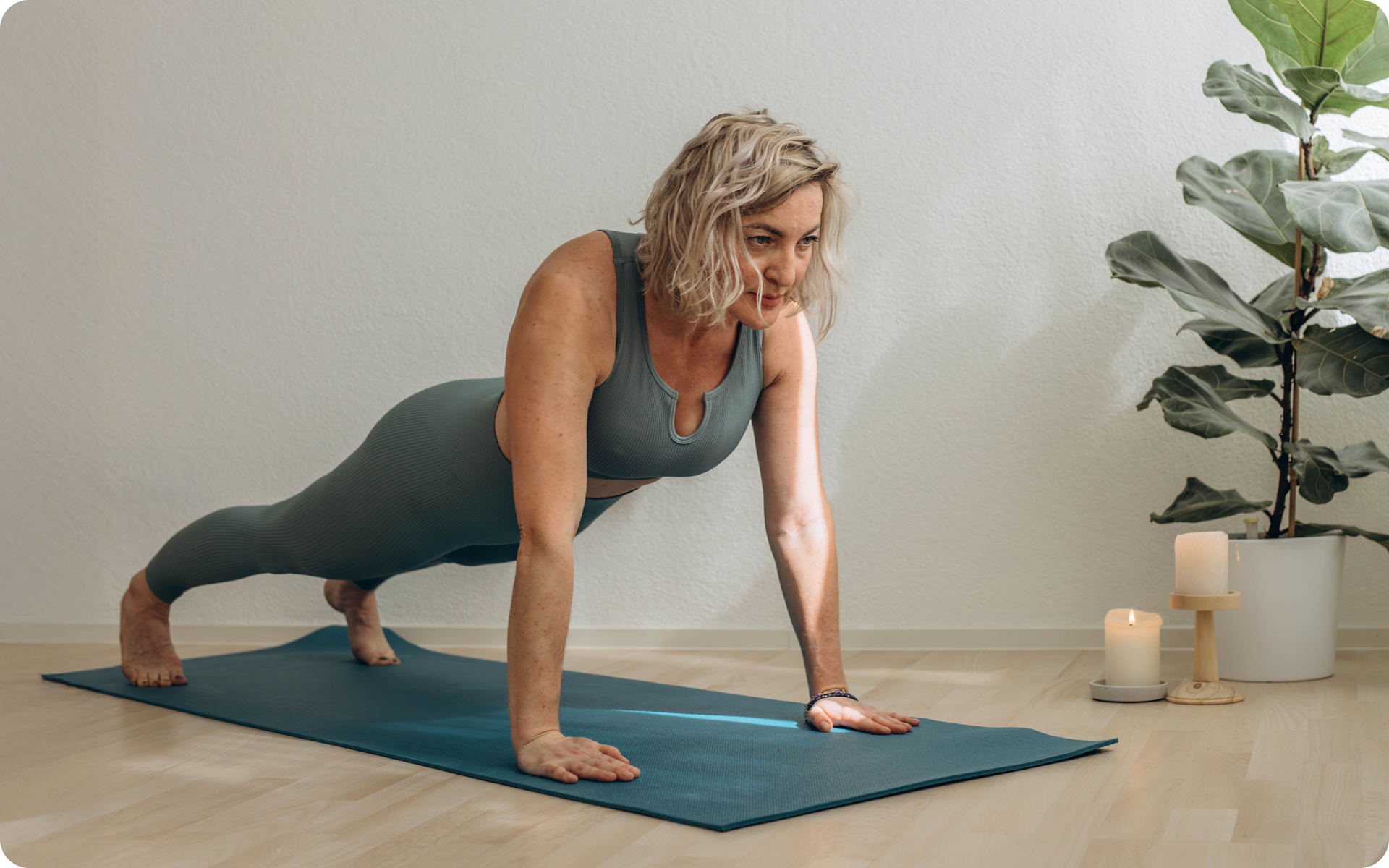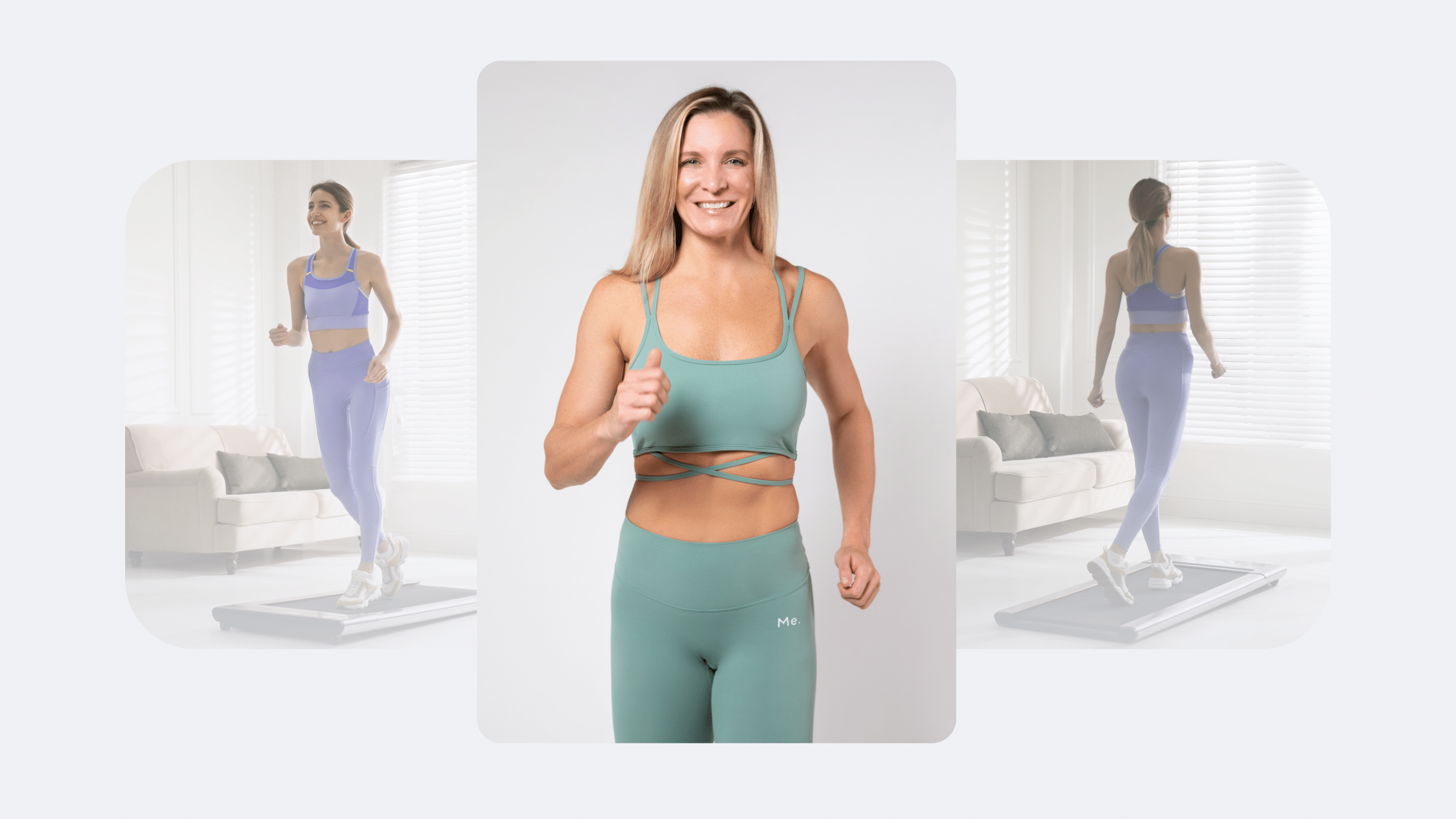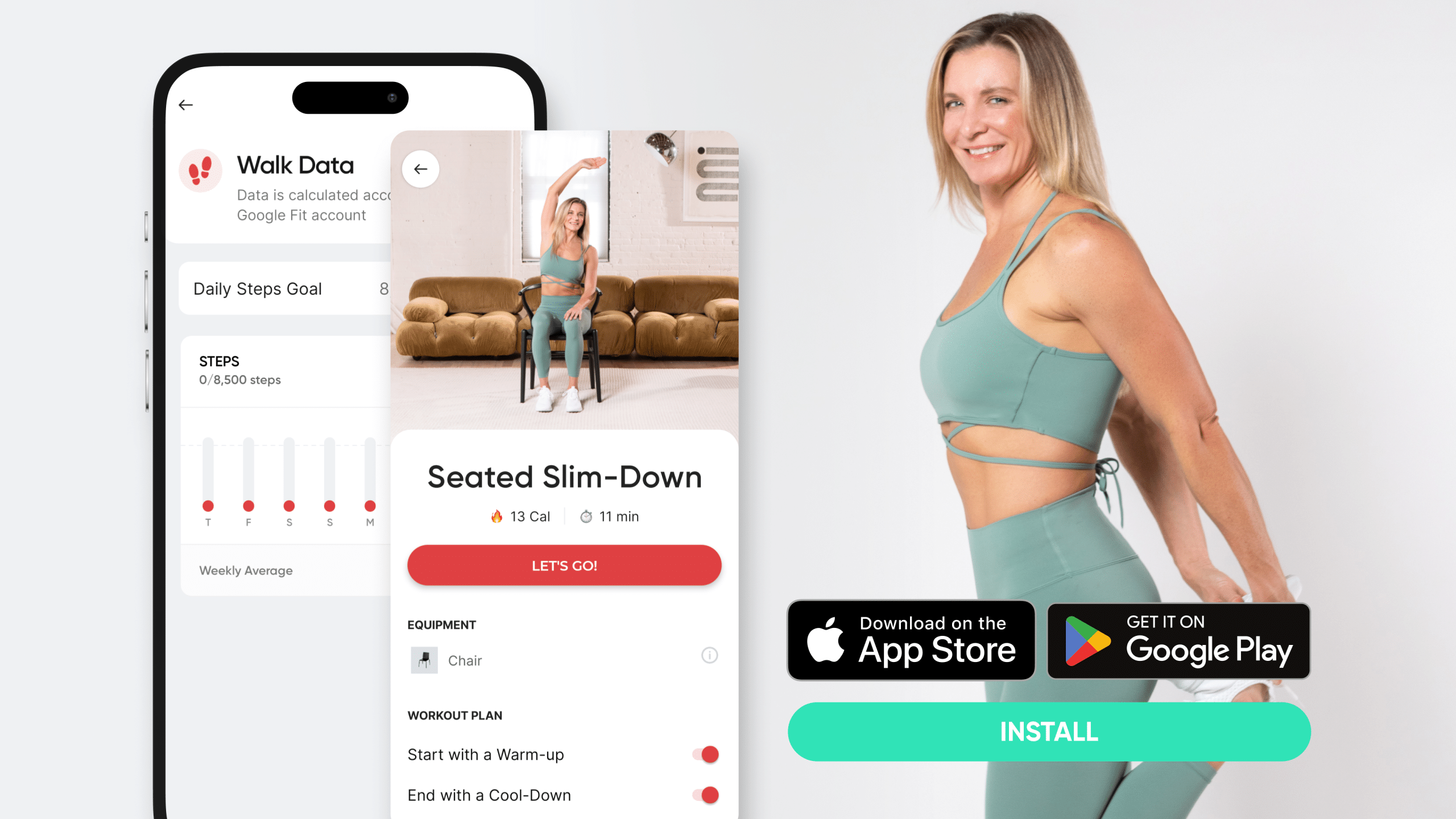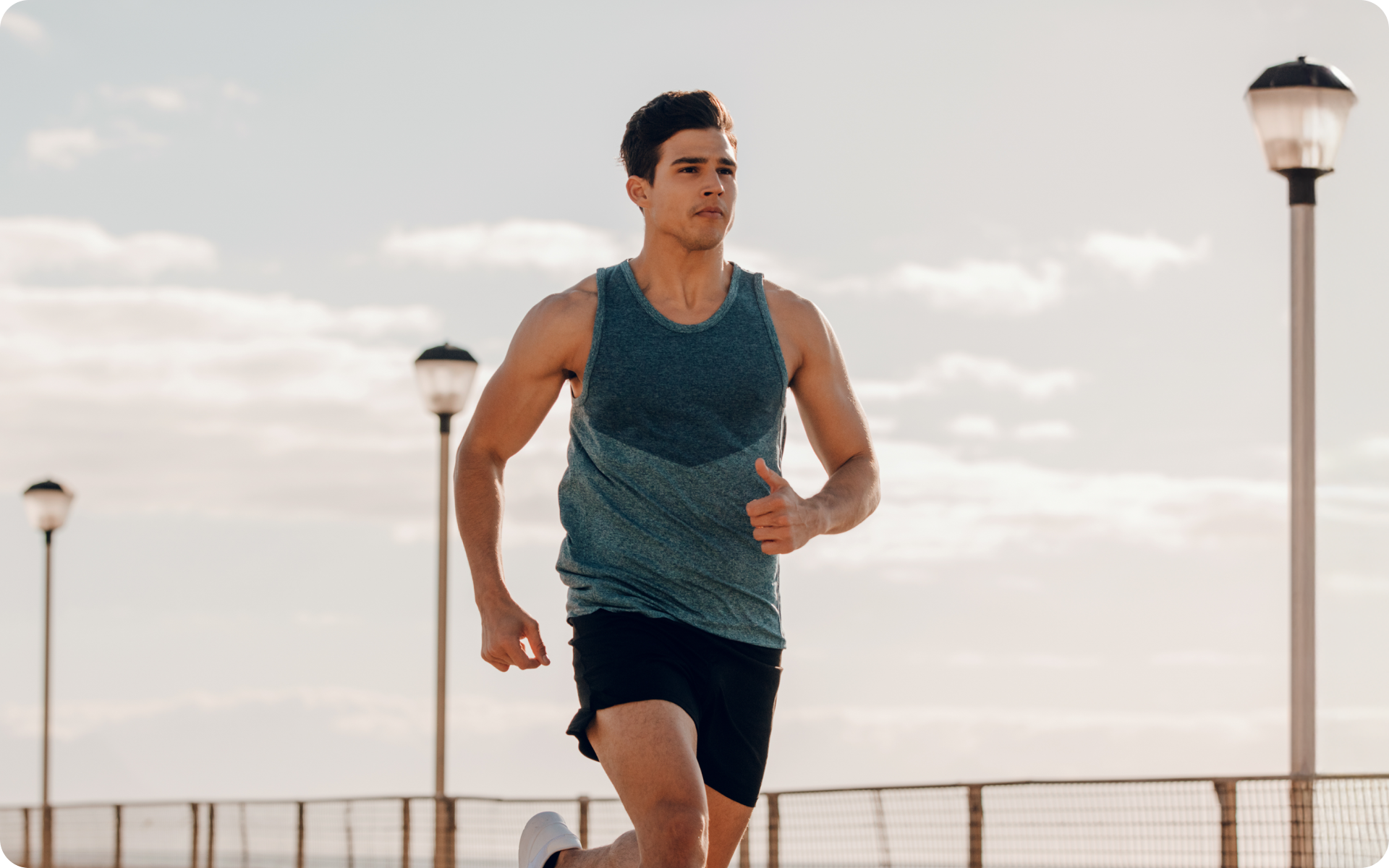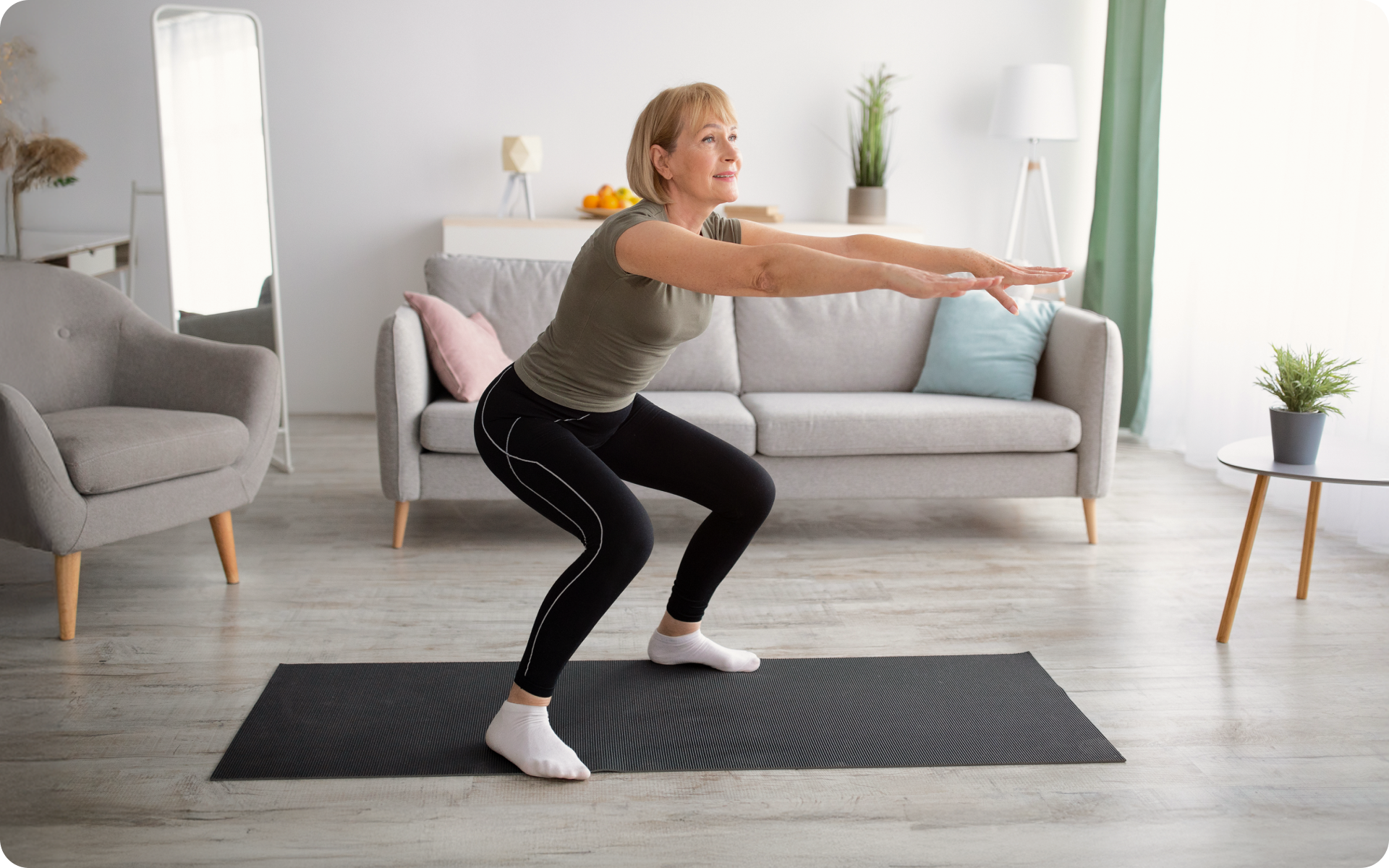As we age, maintaining a slim figure becomes more difficult. We start to pack on the pounds in places we never did before, and one of those places is often the belly.
It’s not a coincidence that so many people struggle with their weight as they age. This is because as we grow older, our metabolism starts to slow down and we lose muscle mass. This makes it harder to lose weight and keep it off.
However, there are some things you can do to fight back, one of which is exercise. Exercise is a great way to boost your metabolism and build muscle. Therefore, it’s particularly important as you get older.
In this article, we’ll share three of the best exercises for losing belly fat after 50. These exercises are also designed to help you burn more fat, build muscle, and improve your overall health.
How do you get rid of belly fat after 50?
Getting rid of belly fat after the age of 50 requires adopting a holistic approach. This involves a combination of regular exercise, a balanced diet, and making any necessary lifestyle changes needed to succeed in this goal.
Some of the key points to consider when working toward losing belly fat after 50 include:
- Incorporating regular cardiovascular exercises: This includes brisk walking, swimming, or cycling, which is crucial for burning calories and boosting metabolism.
- Incorporating strength training routine: A strength training routine that includes all major muscle groups at least twice per week that also focuses on the core muscles to help tone and build muscle mass. This will contribute to a more efficient fat-burning process and an increased metabolism over time.
- A better diet: Diet plays a crucial role in shedding excess belly fat. Opting for a nutrient-dense, well-balanced diet that includes lean proteins, whole grains, fruits, and vegetables is essential. At the same time, limiting the intake of refined sugars, processed foods, and saturated fats is needed to control calorie consumption.
- Drinking enough water: Hydration is often overlooked in this aspect, but it is vital for weight loss. Drinking an adequate amount of water helps with digestion, controls appetite, and supports the body’s natural detoxification processes.
- Getting enough rest: Sleep is another important factor in the management of belly fat. Quality sleep regulates hormones that control hunger and stress, thereby preventing overeating and the accumulation of visceral fat.
- Stress management: Techniques such as meditation or yoga can also help reduce cortisol levels, a hormone that is associated with belly fat storage.
Therefore, a combination of regular exercise, a healthy diet, proper hydration, sufficient sleep, and stress management are the key components to effectively combating belly fat and reducing your waistline after the age of 50.
If you struggle to even flirt with the idea of giving up your favorite foods or working out till your legs give way – BetterMe app is here to breathe a fresh perspective into the way you view the weight loss process! Check out the app and experience the fun side of fitness and dieting with BetterMe!
What is the best type of exercise to lose belly fat in your 50s?
Losing belly fat after the age of 50 requires a strategic and varied exercise routine that targets both cardiovascular health and muscle strength. The three most common types of exercise that successfully target belly fat are:
- High-intensity interval training (HIIT)
- Strength training
- Aerobic exercise
These exercise styles will help you burn calories, enhance metabolism, and promote overall well-being.
Let’s take a closer look at these three exercise clusters.
High-Intensity Interval Training (HIIT)
HIIT involves short bursts of intense activity followed by brief periods of rest or lower-intensity exercise. This approach is efficient for burning calories during exercise and contributes to an increased calorie burn for up to 24 hours post-exercise. It also improves cardiovascular health. HIIT exercises include:
- Sprinting or cycling in intervals
- Jumping jacks
- Burpees
- High knees
- Mountain climbers
Strength Training
Strength training is essential for building lean muscle mass, which contributes to a more efficient metabolism. It also helps tone and tighten the abdominal muscles. Exercises for strength training include:
- Planks
- Squats
- Lunges
- Deadlifts
- Rows
- Push-ups
Aerobic Exercise
Aerobic exercises focus on sustained, rhythmic activities that elevate the heart rate and promote fat burning. These exercises are excellent for overall cardiovascular health. Types of aerobic exercise include:
- Brisk walking
- Jogging or running
- Cycling
- Swimming
- Dancing
- Rowing
Read more: Is The Japanese Towel Exercise an Effective Way to Burn Belly Fat?
High-Intensity Interval Training (HIIT)
HIIT is a type of exercise that alternates between short bursts of high-intensity activity and longer periods of low-intensity activity. This type of workout has been proven to be effective for fat loss, especially in older adults.
HIIT is particularly helpful when you’re trying to lose belly fat. This is because it helps you burn more calories in a shorter amount of time, in addition to building muscle (10). Muscle is more metabolically active than fat, so it helps you burn more calories even when you’re at rest.
Structuring an HIIT workout is simple. You can do it with any type of cardio exercise, such as walking, running, biking, or rowing. Just make sure to alternate between periods of high intensity and low intensity. For example, you could walk for 2 minutes at a moderate pace, then jog for a minute at a faster pace.
Due to the intense nature of HIIT, it’s important to start slowly and increase the intensity gradually. If you’re new to HIIT, you should start with workouts that are 20 minutes or less. Also, make sure you give yourself plenty of rest between HIIT sessions.
Strength Training
Strength training is another great type of exercise for people who are trying to lose belly fat as it helps build muscle. As previously mentioned, muscle is more metabolically active than fat (16).
In one study, people who did strength training 3 times a week for 12 weeks lost more visceral fat (the harmful belly fat) than those who didn’t do strength training.
A key part of effective strength training is using the correct exercises. Exercises that work your whole body are most effective for fat loss. Such exercises include squats, deadlifts, push-ups, presses, rows, and pull-ups.
It’s important to note that you can’t spot-reduce fat from your belly with strength training. However, as you build muscle throughout your body, you’ll also tone your belly. Some specific exercises that target the abdominal muscles and help tone the belly include burpees, crunches, planks, and side bends.
To get started with strength training, we recommend working with a personal trainer or coach. They can help you create a workout plan that’s tailored to your specific goals.
Aerobic Exercise
Aerobic exercise is any type of activity that gets your heart rate up and makes you breathe harder. Walking, jogging, biking, swimming, and dancing are all excellent examples of aerobic exercise.
In addition, aerobic exercise is important for your overall health (11) and it’s also helpful when you’re trying to lose belly fat. This is because aerobic exercise helps you burn calories and reduce visceral fat.
Aerobic exercises are generally low impact in comparison to other types of exercise, which makes them a good choice for those who are trying to lose belly fat after 50.
The Centers for Disease Control and Prevention (CDC) recommends that adults get at least 150 minutes of moderate-intensity aerobic exercise every week. This translates to 30 minutes of aerobic exercise 5 days a week (12).
Incorporating activities such as walking and stair climbing into your daily routine is a great way to get aerobic exercise. This is particularly important if you don’t have time for a structured workout.
Whether you’re a workout beast or just a beginner making your first foray into the world of fitness and dieting – BetterMe has a lot to offer to both newbies and experts! Install the app and experience the versatility first-hand!
Why Is It So Hard to Lose Belly Fat After 50?
Losing belly fat after 50 is more difficult than it is at other ages for several reasons, including:
1. Slower Metabolism
After the age of 50, both men and women experience a natural slowdown in metabolism. This makes it more difficult to lose weight and keep it off as fewer calories are burned throughout the day (3).
2. Hormonal Changes
As women enter perimenopause and menopause, hormonal changes can also make it more difficult for them to lose weight, particularly around the belly (7).
3. Less Muscle Mass
With age, we tend to lose muscle mass, particularly if we are sedentary, which can further slow down metabolism and make it harder to lose weight and keep it off (3).
4. Poor Sleep
Poor sleep is associated with an increased risk of weight gain and obesity (17), and it can be particularly hard to get quality sleep as we age. Some research has found that poor sleep can lead to changes in hormones, making it more difficult to lose belly fat.
5. Stress
Both work-related and home-related stress can contribute to weight gain (8) and managing stress as we age can be particularly hard.
What Can You Do to Lose Belly Fat After 50?
Fortunately, there are some things you can do to lose belly fat after 50:
1. Exercise Regularly
Exercise is one of the best ways to lose weight and keep it off, and it’s particularly important as we age. The 3 types of exercise for belly fat loss mentioned earlier are all great choices.
Many people ask, “what is the best exercise to lose belly fat after 50?” The truth is, there’s no one exercise that’s best for getting rid of belly fat. A combination of aerobic exercise and strength training is actually the most effective way.
You should choose exercises you enjoy and can fit into your schedule, and try to make working out a part of your daily routine.
2. Make Healthy Dietary Changes
Making healthy dietary changes is also important for weight loss, particularly as we age.
You should:
- Eat more fiber: Research has shown that people who eat whole grains lose more belly fat than those who eat refined grains (20). This is because fiber helps keep you feeling full, making you less likely to overeat.
- Limit sugar and refined carbs: These foods can quickly lead to weight gain and they’re also associated with an increased risk of abdominal obesity (5).
- Eat more protein: Protein helps you feel fuller longer. It also helps preserve muscle mass as you age. This is important as muscle mass helps boost metabolism (6).
- Eat more anti-inflammatory foods: Certain foods can help reduce inflammation in the body, which has been linked to weight gain. These include omega-3 fatty acids, olive oil, green tea, and turmeric (2).
- Limit alcohol: While a glass of wine or beer here and there probably won’t have a major impact on your weight, drinking too much alcohol can quickly lead to weight gain. It’s also associated with an increased risk of abdominal obesity(1).
3. Make Healthy Lifestyle Changes
In addition to exercise and diet, there are other lifestyle changes you can make to lose weight and keep it off, including:
- Quit smoking: Smoking is not only bad for your health, it’s also associated with an increased risk of weight gain (15).
- Reduce stress: As previously mentioned, stress can contribute to weight gain (8). Therefore, it’s important to find ways to manage the stress in your life. This could include yoga, meditation, or simply taking some time for yourself each day.
- Get enough sleep: As we age, we often need less sleep than we did when we were younger. However, it’s still important to get enough quality sleep every night. You should aim for at least 7 to 8 hours per night.
Making lifestyle changes can be tough, but it’s worth it if you’re looking to lose weight and keep it off.
4. Consider Intermittent Fasting
Intermittent fasting is a popular weight loss method and it can be helpful for those over 50 (13).
With intermittent fasting, you cycle between periods of eating and fasting. There are many different ways of doing this, but the most common method is to fast for 16 hours and eat for 8 hours (16:8). This could mean skipping breakfast and only eating lunch and dinner, or fasting overnight and eating during the day.
Intermittent fasting can help boost weight loss by reducing your overall caloric intake and reducing your appetite. It’s also been shown to have other health benefits, including reducing inflammation and improving brain health (13).
If you’re interested in trying intermittent fasting, you should consult your doctor to make sure it’s safe for you.
5. Try a Weight Loss Supplement
If you’re struggling to lose weight, you may want to try a weight loss supplement. There are many different supplements on the market, but not all of them are effective.
Some popular weight loss supplements include:
- Green tea extract: Green tea contains caffeine and antioxidants, which can help boost metabolism and promote fat loss (4).
- Conjugated linoleic acid (CLA): CLA is a type of fatty acid that has been shown to help with weight loss (18).
- Garcinia cambogia: Garcinia Cambogia is a fruit that contains hydroxycitric acid, which has been shown to help with weight loss (9).
When you purchase a weight loss supplement, make sure you read the label carefully to find out whether it’s safe for you and that it contains ingredients that are proven to help with weight loss.
You should bear in mind that even the most concentrated and “pure” forms of these supplements may not be effective if you don’t make other lifestyle changes too. Therefore, make sure you combine them with a healthy diet and exercise program.
Read more: 24 Weight Loss Smoothies, 2 Diet Plans, and 5 Belly Fat Smoothie Secrets
FAQs
Does walking reduce belly fat?
In simple terms, yes, walking helps with fat reduction. However, if you’re wondering how to lose weight after 50, incorporating it with other activities will only increase the effectiveness of walking:
– Walking can contribute to overall fat loss, including belly fat, by creating a calorie deficit.
– It engages abdominal muscles, which promotes core strength and toning.
– Regular walking supports cardiovascular health, aiding with weight management.
How do I get rid of my hanging belly?
Some of the best ways to get rid of a hanging belly include:
- Targeted exercises: These include cardiovascular exercise, full body strength training, and targeted abdominal exercises such as planks, leg raises, and crunches that help strengthen and tighten the muscles.
- Healthy diet: Adopting a balanced diet with lean proteins, whole grains, and vegetables also helps control overall body fat.
- Hydration: It’s also recommended to keep yourself hydrated as proper hydration supports skin elasticity, which helps reduce the appearance of sagging.
- Intermittent fasting for women over 50: Another effective strategy is to adopt intermittent fasting where you alternate between periods of fasting and eating. This promotes cycles of energy utilization and provides various health benefits.
What are the 5 foods that burn belly fat?
There are no foods that specifically burn belly fat, but here are common foods that are consumed by lean individuals:
- Avocados: They are rich in monounsaturated fats and fiber.
- Berries: They are packed with antioxidants and fiber, which helps with weight management by keeping you feeling fuller for longer.
- Fatty fish: Omega-3 fatty acids promote fat metabolism.
- Green tea: This drink contains catechins that boost metabolism and fat burning.
- Yogurt: The probiotics in yogurt support gut health, which influences the appearance of belly fat and bloating.
If you’re wondering how you can speed up your metabolism after 50, including these foods in a balanced diet can contribute to the reduction of belly fat when combined with a caloric deficit.
Why is belly fat not reduced after exercise?
If you’ve been wondering why you can’t get rid of belly fat despite exercising, the following could be the problem:
- Caloric surplus: You must also ensure that there is a deficit when it comes to nutrition. Consuming more calories than you burn can hinder fat loss.
- Inconsistent exercise: Are you smashing those workouts regularly? Regularity is essential as sporadic workouts may not yield the desired results.
- Lack of variety: Another strategy to utilize is bringing variety to your workout routine. Mix cardio, strength training, and flexibility exercises for more comprehensive fat-burning.
- Stress and sleep: Are you stressed? Are you getting enough sleep? High stress levels and inadequate sleep can elevate cortisol, promoting belly fat retention.
Addressing your diet and exercise consistency and variety, and managing stress and sleep can enhance the effectiveness of an exercise routine for reducing belly fat.
The Bottom Line
If you’re over 50 and looking to lose belly fat, exercise and healthy diet changes are key. You should try doing HIIT, strength training, and aerobic exercises, which are all great exercises for losing belly fat after 50.
However, there’s no one exercise or food that will magically target your belly fat. By making lifestyle changes and incorporating the exercises for belly fat loss mentioned earlier, you’ll be well on your way to a slimmer waistline.
DISCLAIMER:
This article is intended for general informational purposes only and does not serve to address individual circumstances. It is not a substitute for professional advice or help and should not be relied on for making any kind of decision-making. Any action taken as a direct or indirect result of the information in this article is entirely at your own risk and is your sole responsibility.
BetterMe, its content staff, and its medical advisors accept no responsibility for inaccuracies, errors, misstatements, inconsistencies, or omissions and specifically disclaim any liability, loss or risk, personal, professional or otherwise, which may be incurred as a consequence, directly or indirectly, of the use and/or application of any content.
You should always seek the advice of your physician or other qualified health provider with any questions you may have regarding a medical condition or your specific situation. Never disregard professional medical advice or delay seeking it because of BetterMe content. If you suspect or think you may have a medical emergency, call your doctor.
SOURCES:
- Alcohol Consumption and Obesity: An Update (2015,nih.gov)
- Anti-inflammatory Diets (2015,nih.gov)
- Body composition changes with aging: The cause or the result of alterations in metabolic rate and macronutrient oxidation? (2009,nih.gov)
- Can green tea preparations help with weight loss? (2014,nih.gov)
- Death by Carbs: Added Sugars and Refined Carbohydrates Cause Diabetes and Cardiovascular Disease in Asian Indians (2016,nih.gov)
- Dietary Protein and Muscle Mass: Translating Science to Application and Health Benefit (2019,nih.gov)
- Estrogen Deficiency and the Origin of Obesity during Menopause (2015,nih.gov)
- Effects of Chronic Social Stress on Obesity (2012,nih.gov)
- Effects of garcinia cambogia (Hydroxycitric Acid) on visceral fat accumulation: a double-blind, randomized, placebo-controlled trial☆ (2003,nih.gov)
- High-intensity interval training for health benefits and care of cardiac diseases – The key to an efficient exercise protocol (2019,nih.gov)
- Health benefits of aerobic exercise (1991,nih.gov)
- How much physical activity do adults need? (2022,cdc.gov)
- Intermittent fasting and weight loss (2020,nih.gov)
- Obesity, Inflammation and Diet (2020,nih.gov)
- Relationship between Smoking and Obesity: A Cross-Sectional Study of 499,504 Middle-Aged Adults in the UK General Population (2015,nih.gov)
- Resistance Training Combined With Diet Decreases Body Fat While Preserving Lean Mass Independent of Resting Metabolic Rate: A Randomized Trial (2018,nih.gov)
- Sleep and obesity (2013,nih.gov)
- The role of conjugated linoleic acid in reducing body fat and preventing holiday weight gain (2016,nih.gov)
- The Role of Exercise and Physical Activity in Weight Loss and Maintenance (2013,nih.gov)
- Whole- and refined-grain intakes are differentially associated with abdominal visceral and subcutaneous adiposity in healthy adults: the Framingham Heart Study 1,2,3,4,5 (2010,nih,gov)
